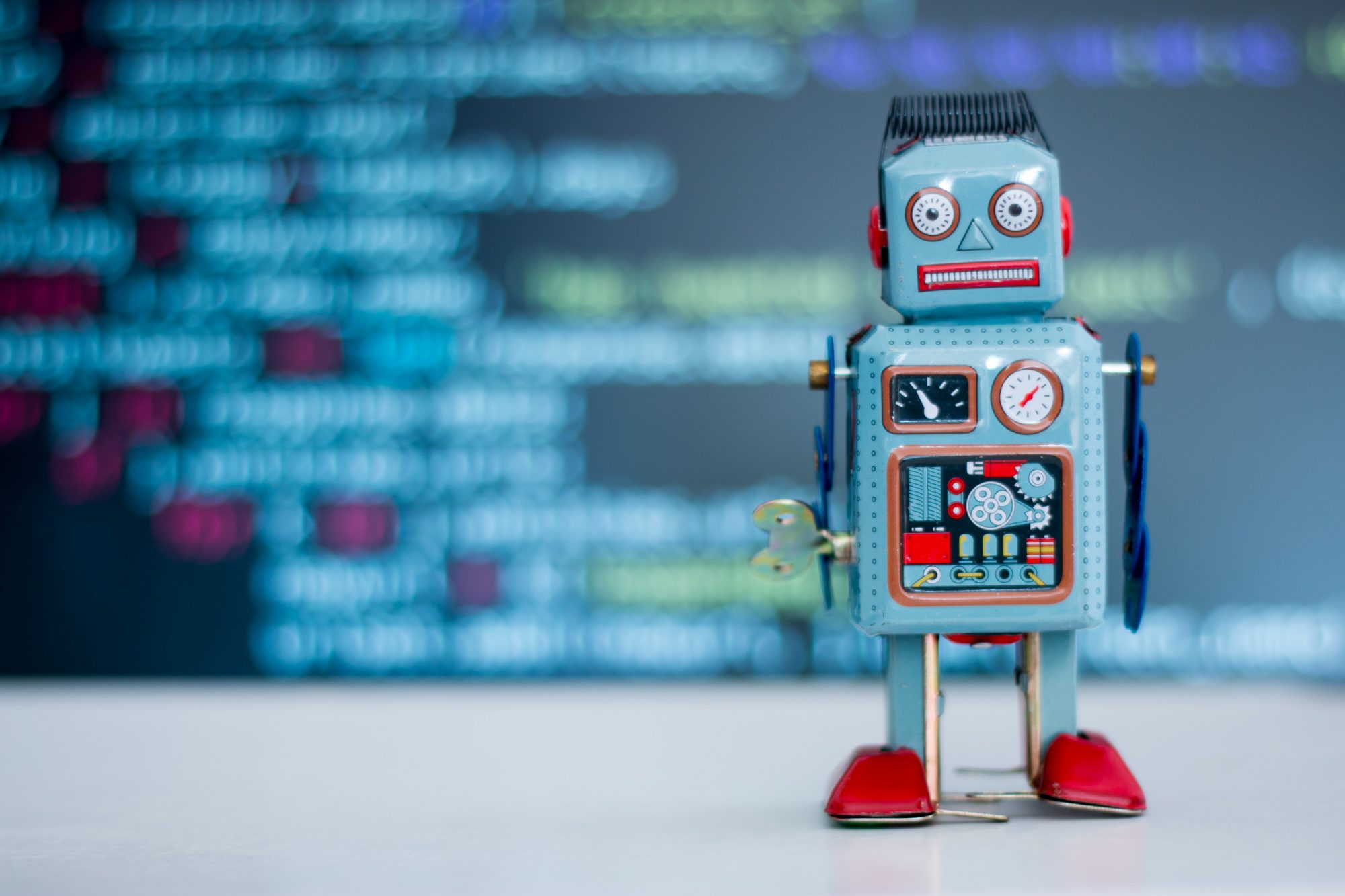I’ve spent a year using AI and it’s solving all of the wrong problems
“I want AI to do my laundry and dishes so that I can do art and writing, not for AI to do my art and writing so that I can do my laundry and dishes.” — Joanna Maciejewska

I’m old enough to remember when AI was an 80’s Sci-Fi trope. That’s not to brag, but it does afford me some small mental vestibule to hide in as I escape the overwhelming onslaught of actualized AI we face on a day-to-day basis.
From your word processors to your web browsers and even the digital assistants on your favorite devices, AI is taking over. There are no AI orphanages because almost every company is falling over itself to adopt some sort of generative tool or chatbot into its products and services at an alarming rate.
I should know, I’ve spent the last year and change knee-deep in most of it. I’ve encountered everything from image generators and artificial girlfriends to voice clones and LLMs that mimic lost loved ones. Needless to say, I’m no stranger to this super-software, and nor am I some tin-foil-hat-wearing luddite who’s claiming it’ll all end in tears. Just that much of it is… Bleh. Well, a lot of it is anyway.
Once you’ve gotten that new car scent out of certain services, it’s hard not to feel like this rich in potential tech is going to waste on all the wrong applications. In fact, I’d go as far as to say that most of the things we’re offered as consumers are counterintuitive at best, and pointless at worst.
It’s not all bad
We’re living in the age of AI, and we should be embracing this new technology at every opportunity. It’s here to simplify our lives, make work easier, and revolutionize the human-computer interface forevermore.
And to be fair, none of that is out of the question. I use generative AI daily, be it through interacting with Meta AI through my Ray-Ban Meta Smart Glasses or linking up with ChatGPT for recipe ideas, watchlist suggestions, and the random answering of any of those previous “I should Google that” questions I have throughout the day.
Virtual assistants have been handed their most invaluable update ever by generative AI — being catapulted to Hollywood levels of performance in a matter of a few short years. It’s also poised to change everything about how we interact with our devices, even if the full realization of that is yet to come.
Sign up to receive The Snapshot, a free special dispatch from Laptop Mag, in your inbox.
We tend to think of computers as boxes with screens attached. Sometimes they're small enough to fit in a pocket or on a wrist, but they all mostly follow the same visual format. However, with the progression of virtual assistants through AI, we could be looking at a seismic shift in how we view and use our devices at a scale not seen since the invention of the mouse.
That's pretty exciting to me, and I'd want it to be for others too. However, after spending more than my fair share of time with various AI models, tools, and services, I think I’m done with AI. Because a lot of everything else attached to it is total bunk.
But there’s plenty of bad
The upgrade to virtual assistants is only a fraction of the wider generative AI pool — and one of the least divisive elements of it at that. As the AI toolset expands it begins to cover all sorts of creative works that result in highly divisive outcomes.
Thanks to generative AI you can create just about anything. And that’s kind of a problem, creating things is a very human characteristic, and it’s not one we should so freely give up. Especially as concern over disinformation, defamation, and the use of deepfake tech to harass others grows.
Can you trust that an article wasn’t written by ChatGPT? That an incriminating image you saw online was real? Or that the recording of a familiar and prominent voice wasn’t AI-generated? As models become increasingly sophisticated, you’d be hard-pressed to know for sure.
Even the best can struggle to spot a fake, and even those who know it's a fake can't deny some of the results. The Sony World Photography Awards judges were so impressed with one AI-generated entry that they were willing to grant it an award in the Creative category.
When AI isn’t busy being used to confuse and confound our confidence in reality, it’s crowbarring you away from all manner of human connections. I’m not entirely sure who comes up with the ideas behind what a company’s AI will offer, but who thought “We’ll let the AI handle talking to other humans for us” was a good idea?
From summarizing emails and articles so you don’t have to engage with human ideas directly to replying to texts from loved ones on your behalf, there’s nothing more bleak and depressing than realizing a large portion of generative AI exists as a roadblock between actually engaging with the world around you.
If you want a brief glimpse into the generative AI dystopia, look no further than Google’s recent “Dear Sydney” ad, in which a father harps on about his daughter’s love of running and her idol, American track and field star Sydney McLaughlin-Levrone.
She wants to write a letter to Sydney, telling her how inspiring she is. Instead, potentially because she’s not actually all that inspired, she outsources that task to her dad. Who then seemingly can’t spare ten minutes to sit with his daughter and work it out, and instead outsources it to Google Gemini, which only knows inspiration through its dictionary definition.
That was meant to be an uplifting commercial. Aspirational even. If that doesn’t highlight the glaring disconnect between the people making these features and the audience they’re trying to pedal them to, I don’t know what will.
We never got to see Sydney receive her AI-generated email. But in a perfect world, it ended up in the spam folder, along with the dozens of other AI-generated spam emails sent to inboxes like mine daily.
I recently saw a post to X by Joanna Maciejewska that hits the nail squarely on the head: “I want AI to do my laundry and dishes so that I can do art and writing, not for AI to do my art and writing so that I can do my laundry and dishes.”
You know what the biggest problem with pushing all-things-AI is? Wrong direction.I want AI to do my laundry and dishes so that I can do art and writing, not for AI to do my art and writing so that I can do my laundry and dishes.March 29, 2024
We’re building AI tools for everyone to use. Just don’t use them.
Making matters even more confusing is the fact that the people developing these tools don’t seem committed to their use either. Simultaneously tempting users to use them for generating writing, images, video, or music, only to develop other tools that can detect when you’ve used them and scold you for taking them up on their initial offer.
A recent analysis by The Washington Post of a 200K-strong dataset of English-language conversations captured from two ChatGPT-like AI chatbots saw homework help and creative writing at the top of the list of use cases. No wonder OpenAI is hesitant to release its own AI identifier for text. That could cause quite a bit of trouble for ChatGPT subscribers.
These companies know all too well that creating text or media that would be deemed cheating or plagiarism is one of the key selling points of their large language models. There’s a reason you can’t ask ChatGPT to write anything saucy, but it’ll have no issue writing an entire dissertation on the breeding habits of the Red-eyed tree frog.
Outlook
Beyond a few exceptions, I just do not see the net benefit of generative AI (at least in how it’s presently marketed to us as consumers) as I once did. While it can make our virtual personal assistants more personal, it’s equally impressive at making actual people’s communications and contributions impersonal.
As it stands, we could all do with a little less generative AI in our devices, systems, and platforms. I’ll keep hold of the digital assistants if you don’t mind me imbibing in my share of hypocrisy, but you can take back the rest.
On the one hand, we’re supposed to fully embrace everything arriving with this new wave of generative AI tools. On the other, we’re almost forbidden from using them. The purveyors of AI are speaking to us from both sides of their mouths as we’re told about the benefits of this tech while being scolded for their application — getting ChatGPT to help with your homework? Plagiarism. Creating AI-generated images? Welcome to the wonderful world of fabricating and facilitating disinformation.
At this point, the only thing I truly know for certain is that with every passing month, I’m left looking at my ChatGPT subscription and wondering if this is really the foundation for the next big thing in tech or just a house of cards.
More from Laptop Mag
- I was excited for this new ChatGPT feature, now I'm terrified of it
- You might accidentally fall in love with ChatGPT's advanced Voice Mode
- Is Gemini Live worth $20? Not while Google's best digital assistant is free

Rael Hornby, potentially influenced by far too many LucasArts titles at an early age, once thought he’d grow up to be a mighty pirate. However, after several interventions with close friends and family members, you’re now much more likely to see his name attached to the bylines of tech articles. While not maintaining a double life as an aspiring writer by day and indie game dev by night, you’ll find him sat in a corner somewhere muttering to himself about microtransactions or hunting down promising indie games on Twitter.










